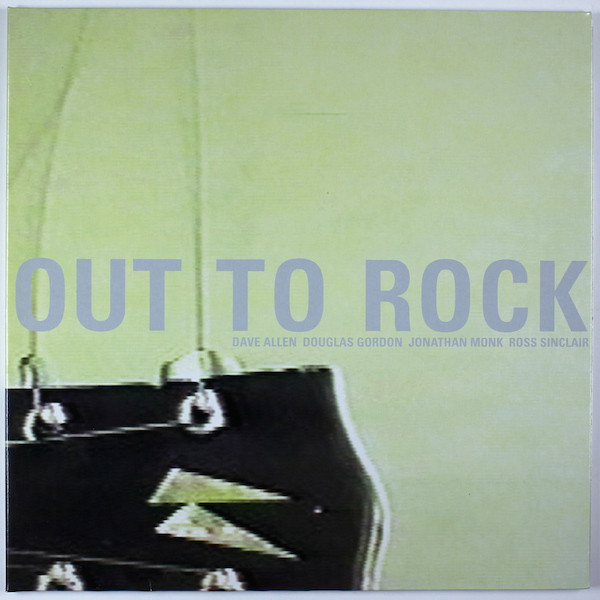
Raimar Stange
Intro/Outro
It was already everybody’s secret in the underground of the “roaring twenties”, when bourgeois ideology imposed the marketable construction of the artist genius as a lonesome warrior. But even today not only the law and order of aesthetic action is undermined by wild gangs of artists, as the “Fab Four” – Dave Allen, Douglas Gordon, Jonathan Monk and Ross Sinclair – could be fittingly called, regarding their various collaborations. Instead of taking a safe bet on a well dosed and pseudo-creative individuality, they consciously aim at the collective but loosely organised characteristics of the phantasy’s luscious production. “For Those About to Rock” tunes into just that.
John Miller
The Use Value of Rock
The video starts. Two guys sit on a bed tuning their guitars. One plays back “Jesus” from a cassette. Then both begin to work out the song’s arrangement methodically. “Jesus. help me find my proper place .” That is the question – where to locate the subject in this scenario. Is it the singer, the band, the producer, the listener, the camera or us, the viewers? Certain rolls inevitably overlap.
The listeners are musicians who are also visual artists. They are amateurs, therefore perfect. They document their own rendition of a song, which may also include their own relation to that song. Even so, to say exactly whether they are producing or consuming it is impossible. To say exactly where amateurism drops off and professionalism begins is also impossible. These ambiguities are the crux of use value. especially when it comes to aesthetics. Moreover, most of the tape’s viewers are probably also artists or other “cultural producers” if indeed that nomenclature is not infinitely expandable.
Theodor Adorno and Max Horkheimer would have lumped rock in with a cynical, overarching “culture industry.” This notion presumes that the products of mass culture are utterly disposable, that once they have garnered their requisite share of surplus value, they have played themselves out. At the opposite extreme is John Sinclair who heralded rock as a revolutionary weapon, a claim he later renounced. Both these projections occlude the concrete terms of cultural production and offer heavy-handed moral platitudes in their place. Cultural studies is better disposed to articulate the way the audience completes the work, first by not treating such an audience as a monolith and by not considering reception to be automatic. From there, it is only a short step to see that creative “misreadings “are more the rule than the exception.
All of the works included here are casual asides; they are all collaborations. They concern associations made within a certain peer group, namely – not to put too fine a point on it – male bonding. In other words, rock serves as a condition of socialisation. A cup of tea cools to room temperature. A cigarette stuck between a string and a tuning peg burns down to the filter. Beer cans pile up around some guitars, amps and a drum kit while two musicians trade off between playing and painting slogans on the surrounding walls. Or else a dancer leaps into view, gyrating to the first few bars of “Smells Like Teen Spirit” – the highpoint of the song. Right away, it’s over. Right ways, it starts again. Nothing in these follows the typical beginning-middle-end sequence of a rock song.
Anyhow, they are videos and they are about either a Bergsonian or Proustian sense of duration – or its annihilation. The visual rhetoric, a mostly static camera in real time,derives particularly from the Warhol films “Eat” and “Sleep.” There,the absence of edits and camera movement promises objectivity. The seeming lack of commentary makes the biological processes depicted in them seem even more inexorable, cropping up, as they do, in two relatively arbitrary human subjects. Similarly, the works under consideration here treat rock as a kind of second nature. Just as they suspend the narrative fiction of the songs that are their subject matter, so too do they refrain from affirming or condemning rock as a particular style or a value. Instead they represent it as a backlog of material for these young men to work – or play – with.
This brings us closer to at least one version of its potential use value, and, perhaps, to one more version of ourown everyday lives.
…
Published by Revolver – Archiv Für Aktuelle Kunst on the occasion of the exhibition For Those About to Rock…, Dave Allen, Douglas Gordon, Jonathan Monk and Ross Sinclair at Galerie der Stadt Schwaz, 2000